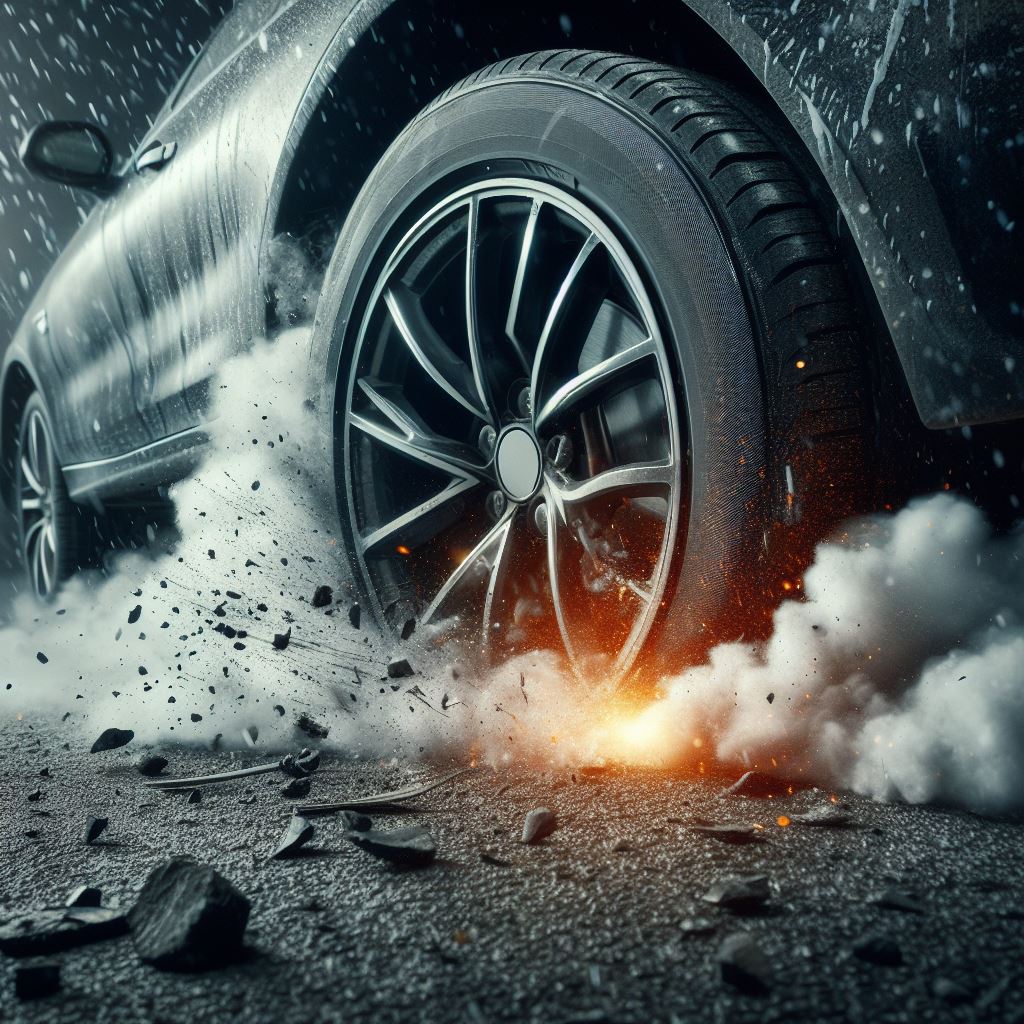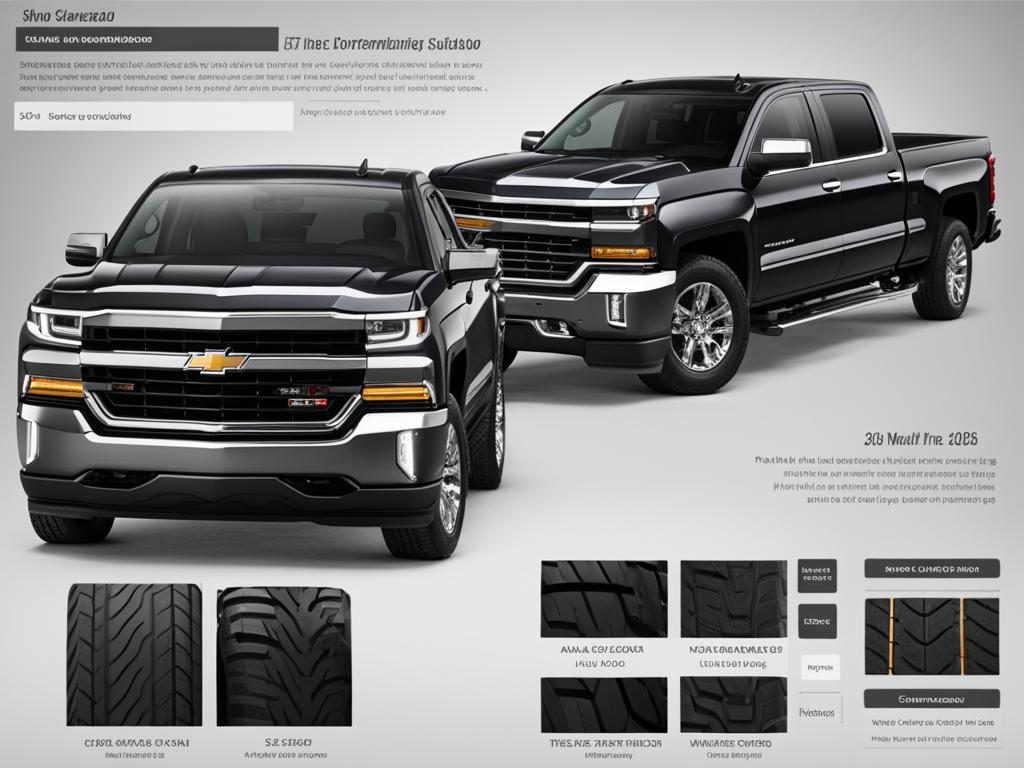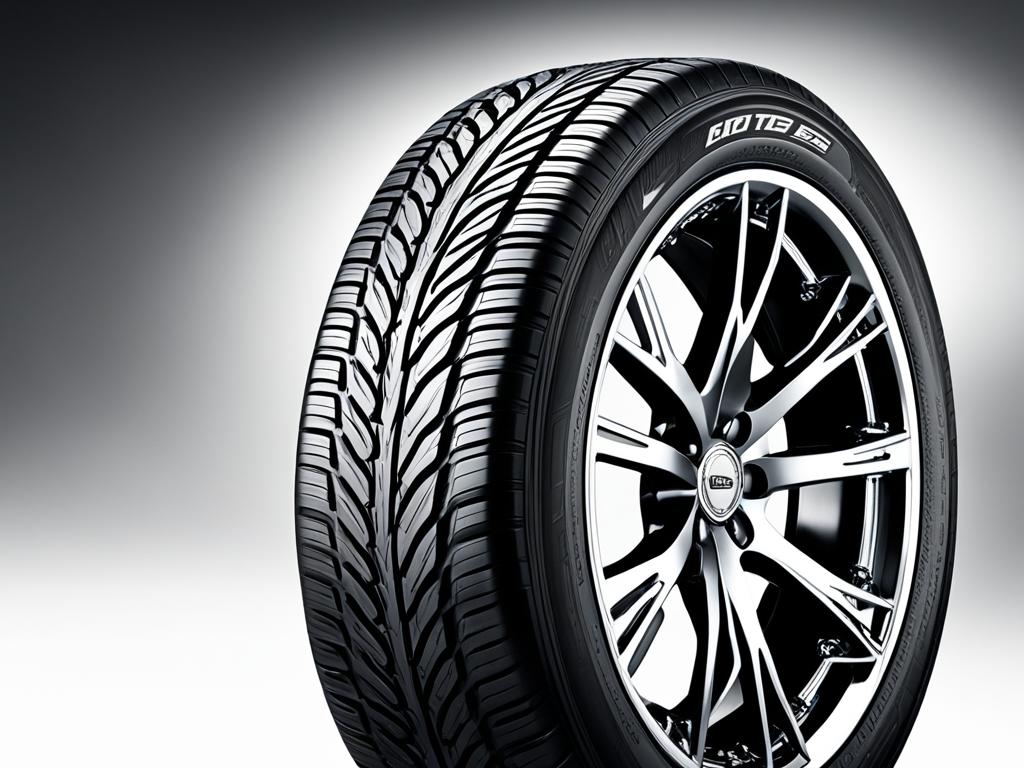Have you ever been cruising down the highway, enjoying the drive, and suddenly felt a jolt that sent your heart racing? In that split second, the familiar rumble of the road turns into a deafening noise, and you find yourself struggling to control your vehicle. That’s the moment you realize you’re experiencing a tire blowout, and everything changes.
If you experience a tire blowout while driving can be a terrifying, one that catches you off guard and puts your safety at risk. But don’t worry, because in this article, we’re going to guide you through the process of how to handle a tire blowout and the immediate actions after a tire blowout.
Whether you’ve already experienced a tire blowout or want to be prepared for the unexpected, this article is for you. Let’s dive in and learn how to stay calm, take control, and handle a tire blowout like a pro.
Understanding Tire Blowout Dynamics
Table of Contents
ToggleWhen it comes to tire blowouts, it’s essential to have a comprehensive understanding of the dynamics involved. This knowledge can help you identify the signs of a tire blowout, handle the situation effectively, and take preventive measures to avoid such incidents in the future.
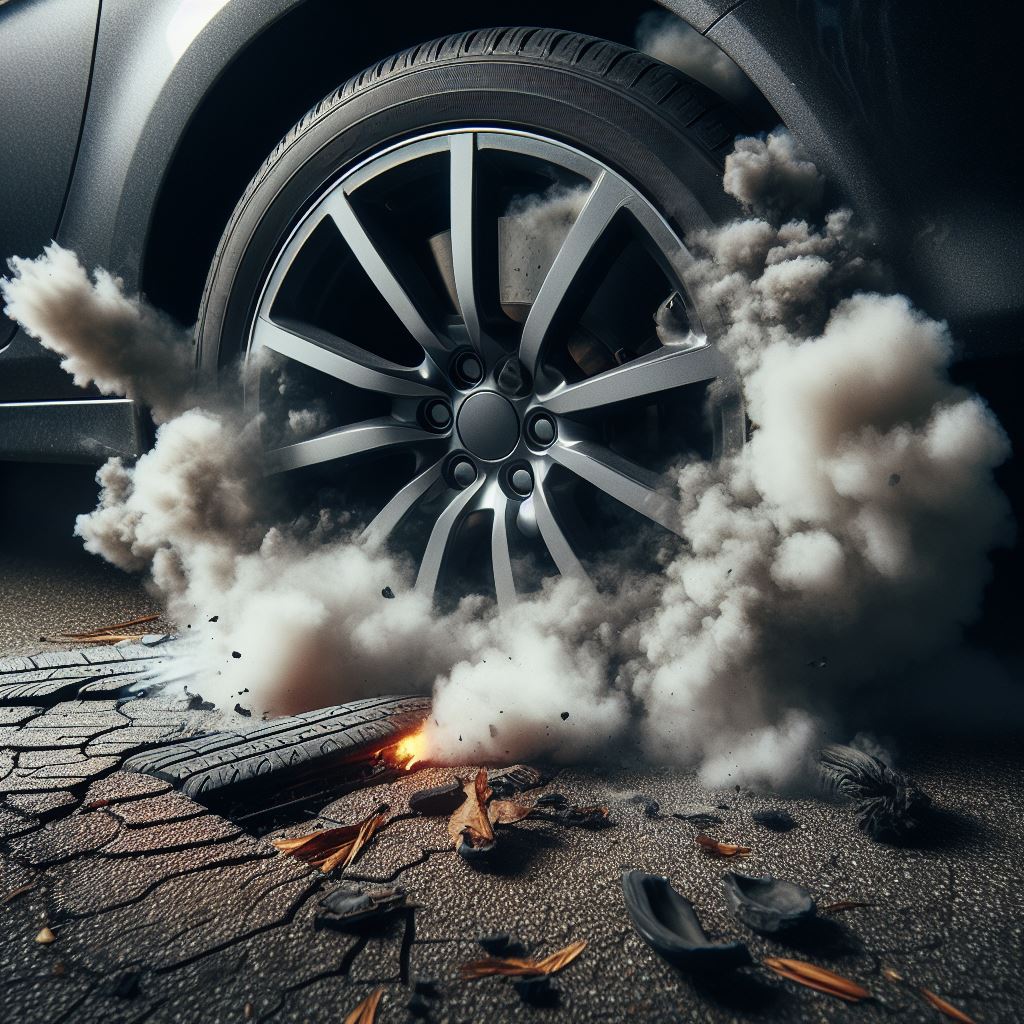
Identifying a Tire Blowout: Sounds and Feels
One of the key aspects of recognizing a tire blowout is being able to identify the distinct sounds and sensations associated with it. When a tire blows out, you may hear a loud popping noise or a rapid deflating sound. You may also feel a sudden jolt or vibration in the vehicle, followed by the loss of control or stability.
By familiarizing yourself with these signs, you can quickly identify a tire blowout and take immediate actions to ensure your safety on the road.
Learn more about Tire tread depth chart
The Physics Behind Handling a Blowout
Understanding the physics behind a tire blowout is crucial for responding effectively. When a tire blows out, it causes an imbalance in your vehicle’s weight distribution, affecting its handling and stability. This can lead to difficulty steering, reduced traction, and potential loss of control.
By comprehending these dynamics, you can adjust your driving technique and respond appropriately to minimize the risks associated with a blowout.
Common Reasons for Tire Blowouts
Tire blowouts can be caused by various factors, but some common causes include:
- Low tire pressure: Underinflated tires are more susceptible to blowouts due to increased stress on the sidewalls.
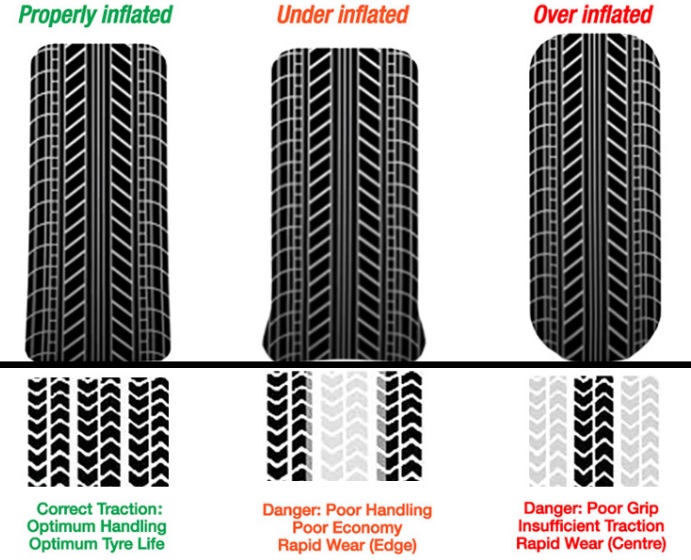
- Overloading: Carrying excessive weight in your vehicle can put added strain on the tires, increasing the chances of a blowout.
- Road hazards: Potholes, sharp objects, and debris on the road can puncture or damage your tires, leading to blowouts.

By being aware of these common causes, you can take proactive measures to prevent tire blowouts, such as regularly checking tire pressure, avoiding overloading, and staying vigilant on the road for potential hazards.
Now that you have a better understanding of tire blowout dynamics, it’s time to explore the immediate actions you should take if you experience a blowout while driving. This will be discussed in the next section.
Learn more about Self inflating tire system
If You Experience a Tire Blowout: Immediate Actions
When faced with a tire blowout, it’s crucial to take immediate actions to ensure your safety and minimize the risks associated with the blowout. By following these steps, you can stay in control of your vehicle and handle the situation effectively:
- Maintain a Firm Grip on the Steering Wheel: As soon as you realize you have a tire blowout, it’s important to keep a steady hold on the steering wheel. This will help you maintain control of the vehicle and steer it in the right direction.
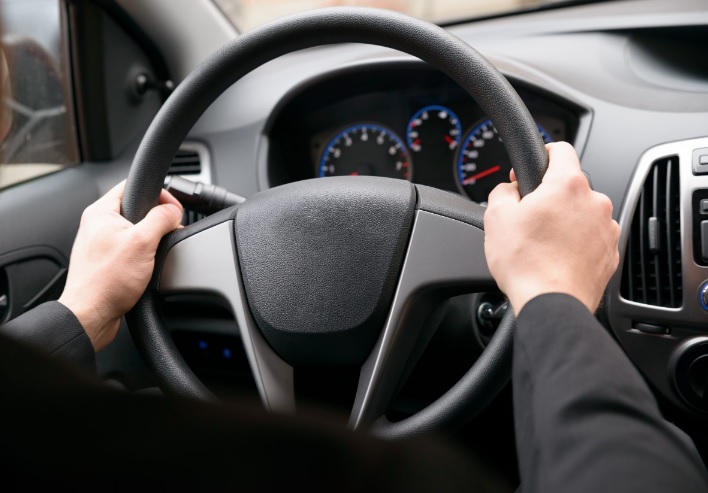
- Gradually Release the Accelerator: Avoid slamming on the brakes or abruptly releasing the accelerator. Instead, gradually reduce your speed by gently easing off the accelerator. This will help you maintain stability and prevent further loss of control.
- Do Not Brake Suddenly: It may be instinctive to hit the brakes hard when experiencing a blowout, but this can lead to loss of control and further risks. Instead, focus on steering and gradually reducing your speed.
- Steer Straight: Keep your vehicle moving in a straight line as much as possible. Avoid making sudden turns or swerving, as this can cause the vehicle to lose balance and increase the risk of an accident.
- Find a Safe Spot to Stop: Once you have regained control of the vehicle, scan the surroundings for a safe spot to pull over. Use your turn signals to indicate your intentions and carefully maneuver the vehicle off the road.
- Activate Hazard Lights: Once you have come to a stop, remember to turn on your hazard lights to alert other drivers of your situation. This will help ensure your safety and make your vehicle more visible.
Tire Blowout Safety Tips: Staying in Control
When facing a tire blowout, it is crucial to stay in control of your vehicle to minimize the risks and ensure your safety. By following these tire blowout safety tips, you can effectively navigate through this challenging situation:
Learn more about Top most expensive tire brand in the world
Gripping the Steering Wheel Correctly
Properly gripping the steering wheel during a tire blowout is essential for maintaining control. Ensure that you have a firm grip on the wheel with both hands. Position your hands at the 9 o’clock and 3 o’clock positions, which will provide you with optimal control and stability. Avoid crossing your arms or gripping the wheel too tightly, as it can impede your ability to make necessary steering adjustments.
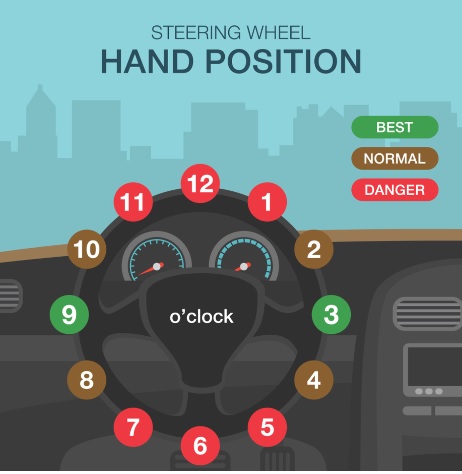
Accelerating vs Braking: What Works Better?
Understanding the best course of action when facing a tire blowout can be confusing. The appropriate response depends on several factors, including the specific circumstances and the type of vehicle you are driving. However, as a general guideline:
- Do not accelerate: In most cases, accelerating when a tire blows out can cause the vehicle to lose control further. Focus on keeping a steady grip on the steering wheel and maintaining a consistent speed.
- Do not brake suddenly: Slamming on the brakes can also lead to loss of control and potentially cause the vehicle to spin or veer off the road. Instead, gradually release the accelerator pedal while maintaining a firm grip on the steering wheel.
By understanding these tire blowout safety tips, you can enhance your ability to stay in control and safely navigate through a blowout. Remember to stay calm, maintain focus, and prioritize your safety when faced with this situation.
Post-Blowout Procedures: What to Do After a Tire Blowout
Once you have safely navigated through a tire blowout, there are important post-blowout procedures to follow. This section will guide you on what to do after a blowout, including checking for tire damage, installing a spare tire, and seeking professional assistance if necessary. By knowing the right steps to take, you can ensure your safety and the proper handling of the situation.
After experiencing a tire blowout, it is essential to assess the extent of the damage to your tire. Check for any visible signs of punctures, tears, or bulges in the tire. If the damage is severe or the tire cannot be safely repaired, it may be necessary to replace it. Remember, proper tire maintenance is crucial for your safety on the road.
If the tire damage is minor and can be safely repaired, it is advisable to seek the help of a professional tire repair service. They have the expertise and equipment to assess the damage accurately and perform the necessary repairs. Attempting to repair a damaged tire on your own could compromise your safety and the performance of the tire.
If you have a spare tire available, it is time to install it. Follow the instructions provided in your vehicle’s owner’s manual to ensure proper installation. Ensure that the spare tire is inflated to the recommended pressure level before putting it on. Remember, a spare tire is only intended as a temporary solution, so it is important to have the damaged tire repaired or replaced as soon as possible.
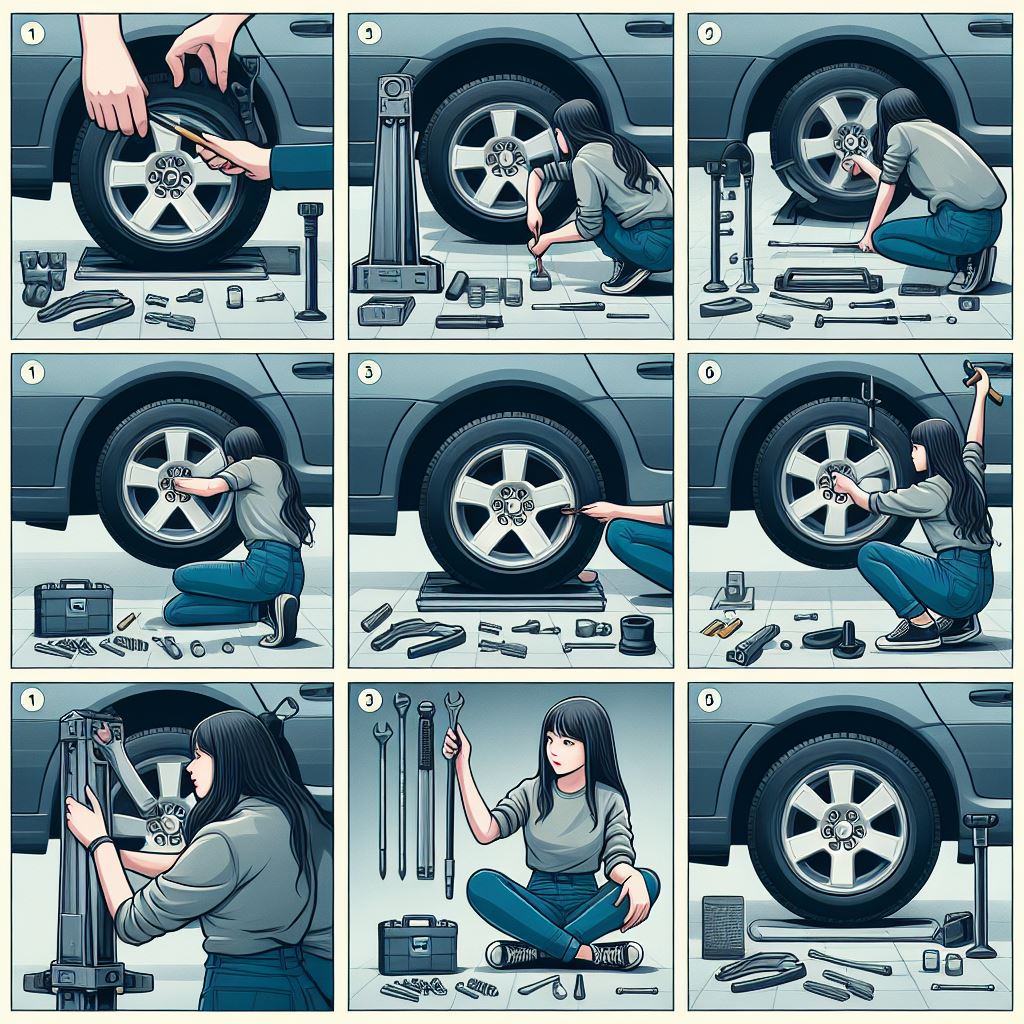
If you do not have a spare tire or do not feel comfortable installing it yourself, contact roadside assistance or a professional towing service. They will be able to assess the situation and provide the necessary support to get you back on the road safely. It is always better to seek professional help when you are unsure or uncomfortable with performing a task yourself.
Remember, after experiencing a tire blowout, it is crucial to remain calm and composed. Follow these post-blowout procedures to ensure your safety and the proper handling of the situation. By taking the necessary steps and seeking professional assistance when needed, you can overcome the challenges of a tire blowout and continue your journey with peace of mind.
Conclusion
In this article, we have explored the various aspects of reacting to a tire blowout during driving. By understanding tire blowout dynamics, knowing the immediate actions to take, and following safety tips, you can confidently handle a blowout and ensure your safety on the road.
Remember to stay calm, maintain control, and seek professional help when needed. By being prepared, you can minimize the risks associated with a tire blowout and stay safe during your journey. It is important to note that tire blowouts can happen to anyone at any time, regardless of their driving experience or vehicle condition. Therefore, it is advised to assess the risk of a tire blowout and consider tire blowout insurance for added protection.
In case of an emergency response, always prioritize your safety and the safety of others on the road. Keep in mind the immediate actions outlined in this article, such as maintaining a firm grip on the steering wheel and gradually releasing the accelerator. By taking these steps and being prepared, you can effectively respond to a tire blowout and mitigate potential damages or injuries.
FAQ
Can I identify a tire blowout while driving?
Yes, there are distinct sounds and sensations that can help you recognize a tire blowout. Learning to identify these signs can help you react quickly and appropriately.
How does a tire blowout affect my vehicle’s handling?
Understanding the physics behind a tire blowout and how it affects your vehicle’s handling can help you respond in the best way possible during a blowout situation.
What are the common causes of tire blowouts?
Common causes of tire blowouts include low tire pressure, overloading, and road hazards. Taking preventive measures can help you avoid experiencing a blowout.
What should I do if I experience a tire blowout?
It is important to take immediate actions during a tire blowout. This section will outline the steps you should follow to stay in control of your vehicle and minimize the risks associated with a blowout.
How should I grip the steering wheel during a tire blowout?
Properly gripping the steering wheel during a tire blowout is essential for maintaining control. This section will provide guidance on the correct hand placement and grip technique.
Should I accelerate or brake during a tire blowout?
Understanding whether to accelerate or brake during a tire blowout can be confusing. This section will discuss the pros and cons of each approach and provide insights on what works best in different situations.
What should I do after a tire blowout?
After experiencing a tire blowout, it is important to check for tire damage, install a spare tire if available, and seek professional assistance if necessary. This section will guide you on what to do after a blowout.
